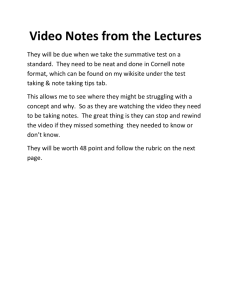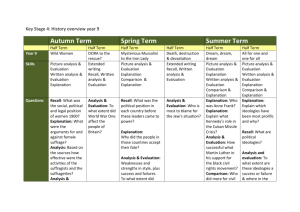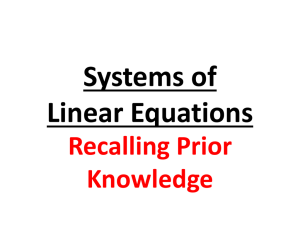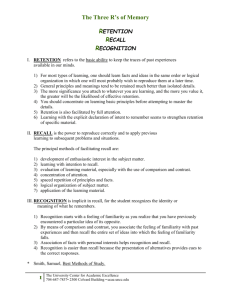VISUAL MEMORY AND VISUAL SEQUENTIAL MEMORY
advertisement
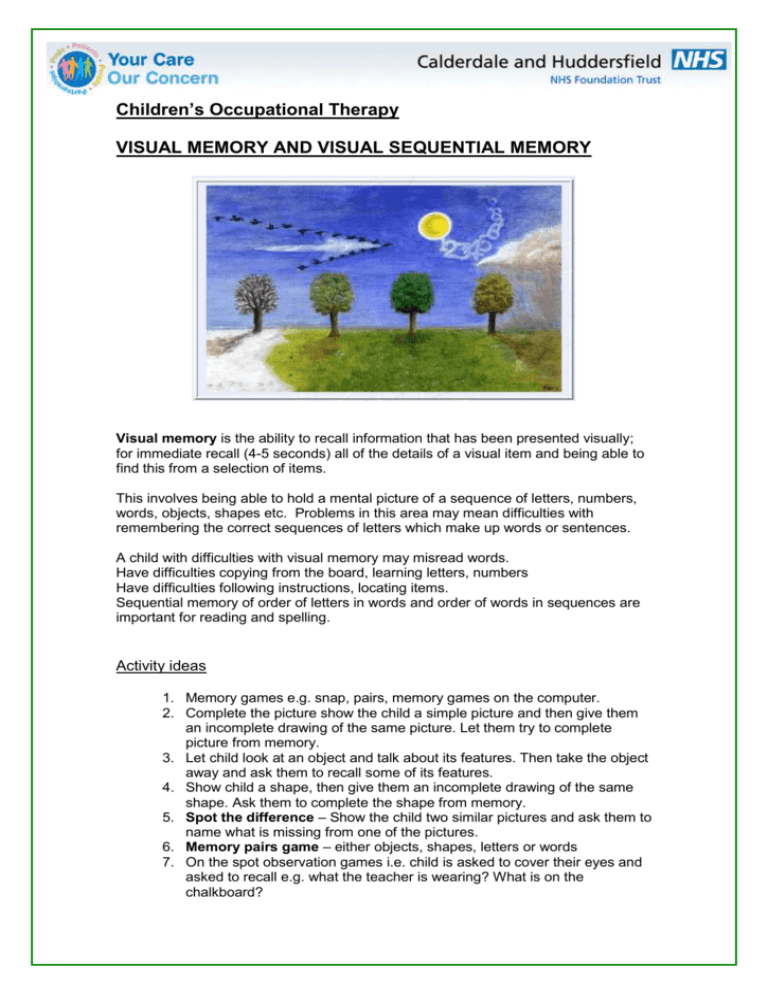
Children’s Occupational Therapy VISUAL MEMORY AND VISUAL SEQUENTIAL MEMORY Visual memory is the ability to recall information that has been presented visually; for immediate recall (4-5 seconds) all of the details of a visual item and being able to find this from a selection of items. This involves being able to hold a mental picture of a sequence of letters, numbers, words, objects, shapes etc. Problems in this area may mean difficulties with remembering the correct sequences of letters which make up words or sentences. A child with difficulties with visual memory may misread words. Have difficulties copying from the board, learning letters, numbers Have difficulties following instructions, locating items. Sequential memory of order of letters in words and order of words in sequences are important for reading and spelling. Activity ideas 1. Memory games e.g. snap, pairs, memory games on the computer. 2. Complete the picture show the child a simple picture and then give them an incomplete drawing of the same picture. Let them try to complete picture from memory. 3. Let child look at an object and talk about its features. Then take the object away and ask them to recall some of its features. 4. Show child a shape, then give them an incomplete drawing of the same shape. Ask them to complete the shape from memory. 5. Spot the difference – Show the child two similar pictures and ask them to name what is missing from one of the pictures. 6. Memory pairs game – either objects, shapes, letters or words 7. On the spot observation games i.e. child is asked to cover their eyes and asked to recall e.g. what the teacher is wearing? What is on the chalkboard? 8. Observation walks - can child remember 4 things from the walk; which you may have identified or pointed out or discussed? 9. Use a blackboard draw a picture or geometric designs, cover it get the children to copy from memory, gradually increase difficulty of shapes. 10. Kim’s game display several familiar objects on the table ask child to look at objects and remember them, cover them and ask what is on the table, remove one, ask which one is missing. 11. Book glimpse – open a small picture or story book to a given page and have the child scan if for a few seconds. Close the book and request the child to find the correct page. 12. Spelling game - look, cover, remember, write, check. Strategies Lists – write small lists of things to do, e.g. Steps involved Classification – place similar items in same place Seriation – organise information into a particular sequence. Put words into a story to remember. Memory Hooks – make things meaningful, e.g. a “u” can catch rain like a cup. VISUAL SEQUENTIAL MEMORY Sequential memory is the ability to remember the order of objects and events. Activity ideas Arrange a sequence of objects e.g. fork knife spoon in order of size, small to large, then mix the sequence and get the child to arrange them. What happens next? Make from comic strips or buy ‘sequence cards’ of everyday situations ask child to sort in correct order. Recall and sequence the days of the week using magnetic words or cardson Recall and sequence numbers 1-10. Recall and sequence the alphabet, using magnetic letters on board or fridge Recall and sequence a series of three to four coloured shapes. Block sequences – patterns with beads, shapes with macaroni, get the child to copy the design or sequences, grading in difficulty Miming games or charades. Acting out sequences, such as making a cup of tea. Movement or ball sequences, e.g. jump, jump, hop, catch ball, or bounce, throw in air and clap then catch. Clapping rhythms. ask the child to copy one that you do first. Hangman or junior scrabble. Spell help, try writing partial words and getting the child to fill in. Try making words with play dough or paper. Some children find singing their spelling helps them to remember.



